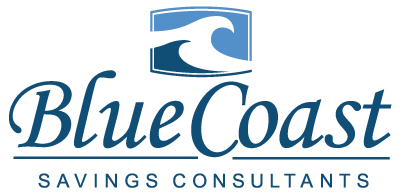Starting a Business – Writing a Simple Business Plan
Recently we published a blog post about Start-up Business Basics. In that post one of the points we discussed was Writing a Simple Business Plan. Today we’re going to dig a little deeper into that point.
Business Plan Basics
When writing a business plan keep it simple to make it clear. A business plan for a new enterprise is an opportunity to prove to prospective investors that the idea is worth their time and money. And even if you don’t need to borrow funds to start your business, a basic business plan is still a very important step in the process of starting a business.
Executive Summary
The first part should be an executive summary of the main points of the entire plan, a brief description of the market the business intends to enter, the unfulfilled client or customer wants and needs the business will serve, and the reasons why the business operator has the knowledge, skills, abilities, and experience to serve them successfully and profitably. Milestone projections, where the business will be after one, two, and five years in overhead, revenue, and profits and losses, are important to investors and you and should be up front in the summary.
The summary is a synopsis, an overview, a quick look at the whole enterprise usually best written last with all information available for selection.
Company Description
This part describes the business in some detail, the purpose behind the idea, who needs it, its unique selling points, and why customers will want it. Several features should make the idea a distinctive standout. Details of any intellectual property rights, patents, or copyrights in place or pending are useful on this point.
The plan should explain the competitive advantages that will make the business a success because of its location, expert personnel, efficiency, and/or ability to offer value to customers. Questions to answer here are whether the product or service can grow, whether there is room for development and expansion and what form it would take, and whether the business has a history as a re-launch or if it is a start-up. Finally, the plan should indicate how the business is organized, as a sole proprietorship, limited partnership, or private corporation, and whether the legal form is subject to change.
Market Analysis
This section should describe the marketing strategy for reaching potential customers and demonstrate a thorough knowledge of market size and trends and how the business product or service fits into the market. Knowledge of who and where the customers are is important, and reasons why the business product or service will appeal to them. The market analysis should also include a customer profile of gender, age, income, and interests.
The plan should include a sales strategy; whether to sell by telemarketing, from a shop or office, and/or online, and a pricing plan. Information about competitors, their market shares, their strengths, weaknesses, and marketing tactics, is also of interest to investors.
Business Operations
This section should be about the ownership and organization of the company, and its management, who does what in the business, their backgrounds, why they are there as directors or employees, and their responsibilities. Whoever reads the business plan wants to know who’s in charge. There should be a description of each division or department and its function.
A simple but impressive way to illustrate the structure of the business is by an organization chart with a narrative of exactly who is in charge of every function so nothing gets overlooked, and nothing gets done three or four times, important facts to potential investors.
Any materials, supplies, or equipment in use now or in the future, where the business obtains them, and why it needs them should be in this part of the plan. Any business is subject to legal oversight, so the plan should outline any relevant safety or health information and any required licensing.
Finances
For purposes of the plan, finances should cover both daily costs of running the company and forecasts for sales, profit and loss, and cash flow over at least three and probably no more than five years showing when the break-even point comes and when profits start to accrue. Here it is important to account for everything from rent to utilities to salaries and commissions to supplies and taxes. The plan should show revenue streams, sales forecasts, and projected profits and losses, make some financial assumptions, present a contingency plan, and show how it calculates predicted numbers.
Most creditors want to see what the business will be able to do in the next few years. Each year’s report should forecast income statements, balance sheets, cash flow statements, and capital expenditure budgets. For the first year, the business should supply monthly or quarterly projections that should match financing appeals; creditors always look for inconsistencies.
The Document
It’s important to compose a business plan well-written with correct grammar, punctuation, and spelling and formatted neatly and consistently in standardized font, pagination, heading size, and spacing. Keep it clear and simple and avoid technical jargon where possible so everyone understands it. Graphs and charts are often better than tables of numbers for conveying information, and white space has value; dense sections of text are sometimes hard to read.
Starting a business can be a lot of fun. It can also be a lot of work. At Blue Coast Savings Consultants we offer a turn-key business opportunity much like that of a franchise except that there are no ongoing royalties to be paid and there is a relatively low initial licensing fee.
At Blue Coast we also have proven marketing strategies and numerous tools and programs to help you succeed as a Business Savings Consultant. Contact us today to learn more.





